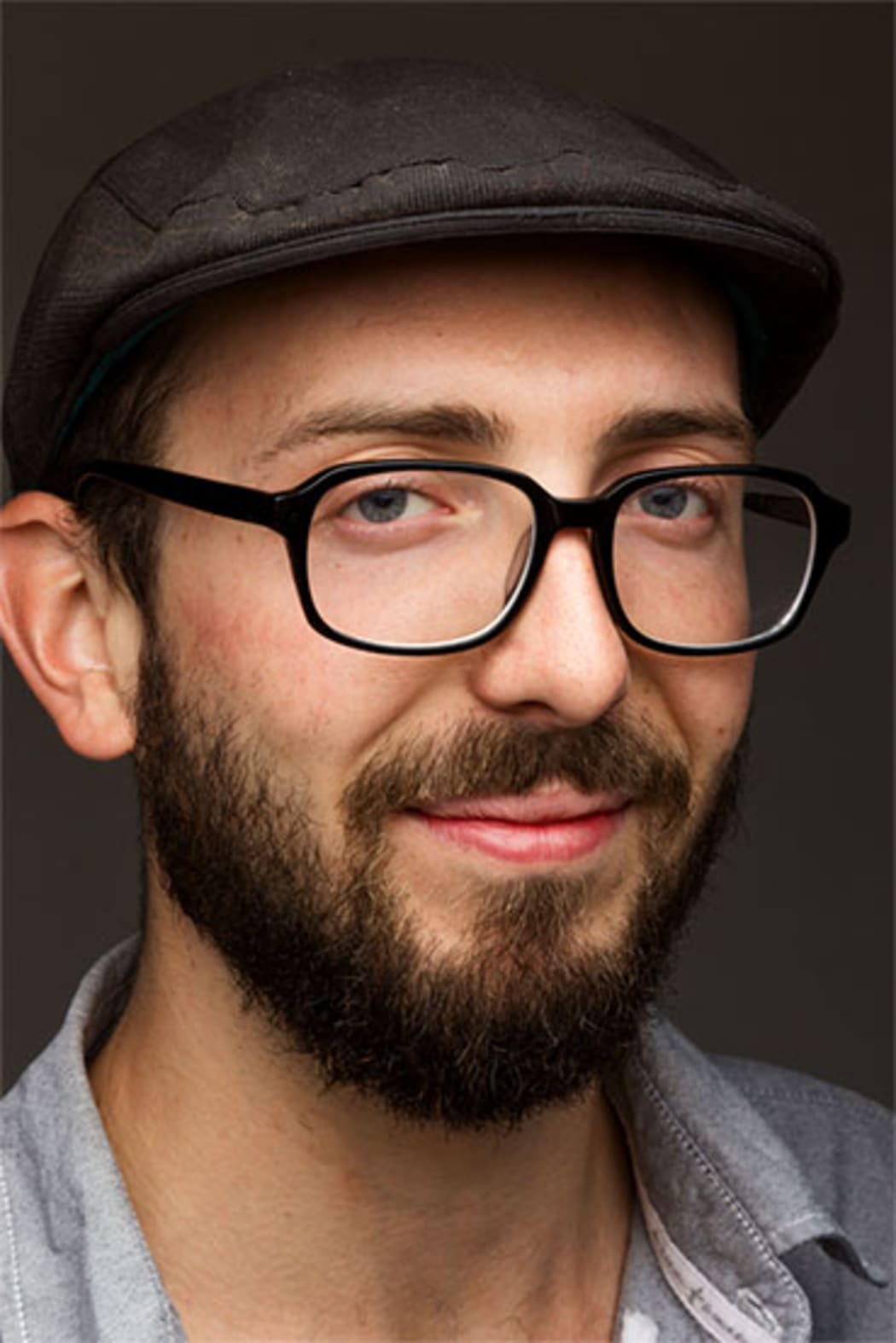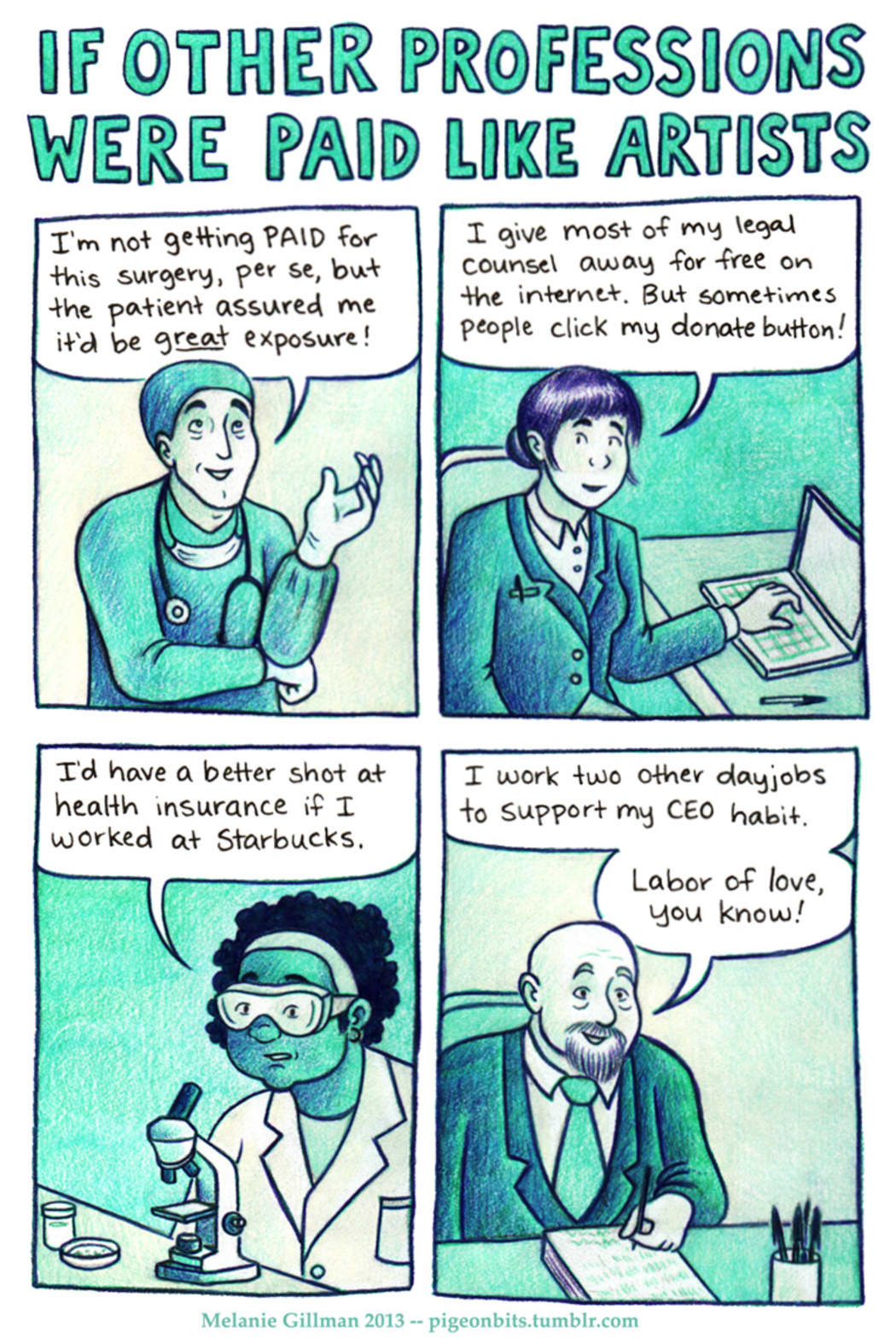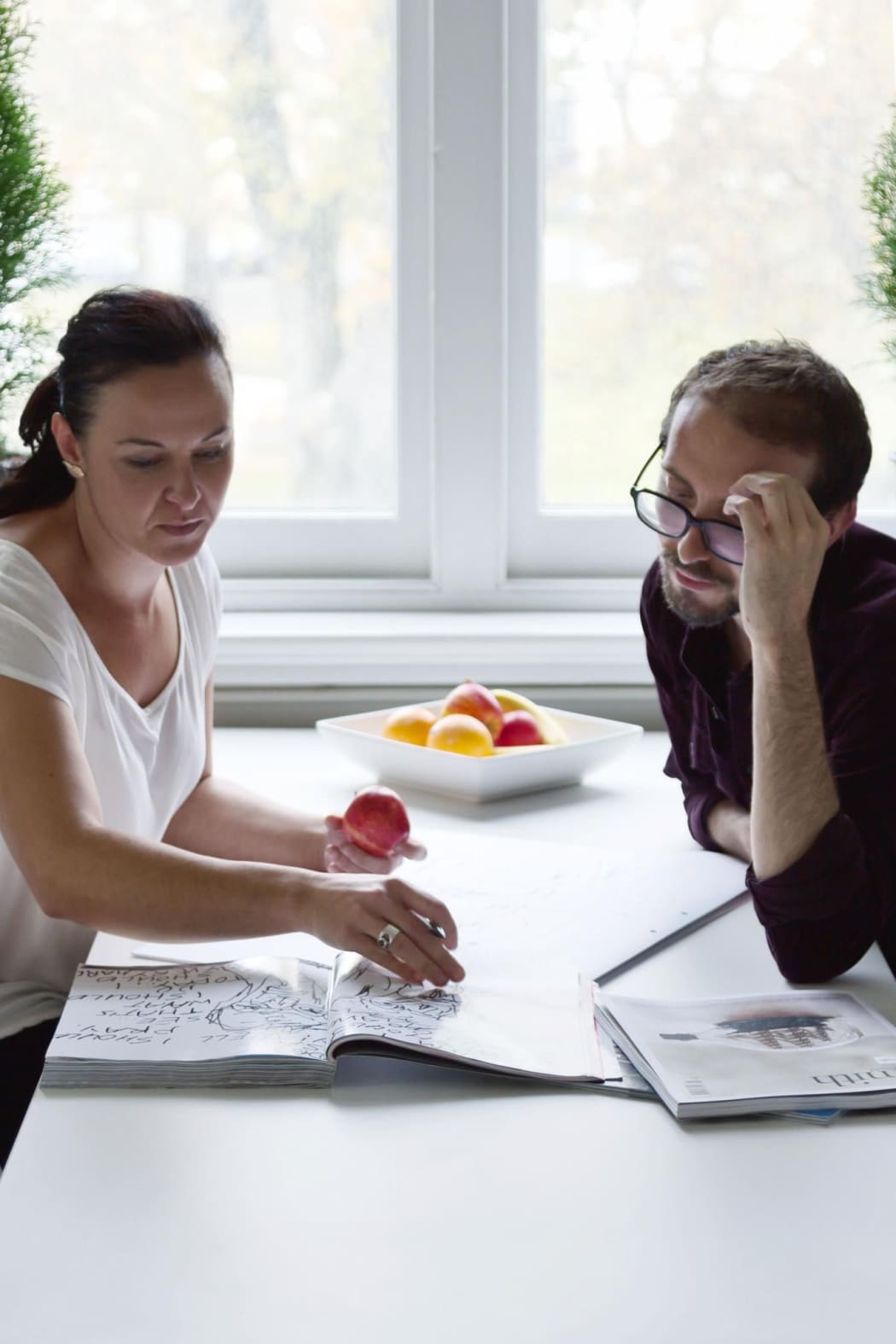In “Should I Work For Free?”, the conclusion graphic designer Jessica Hische reaches is – bar a few charitable exceptions – only for your mother. “22 hours of labour and you can’t do ONE goddamn garage sale flyer? COME ON!”
The flowchart now has its own permanent URL (and clean version), presumably to allow for easy reference when weighing up whether or not that unpaid commission is worth the “exposure”.
Working for little or no money is no anomaly amongst the creative and media industries, where it’s accepted that relevant experience and a portfolio increase your chances of being able to make a living from your craft.
But in industries where the product is subjective, pay rates are often determined by experience, meaning aspiring artists are left vulnerable as they try to amass a body of work that (they hope) will lead to either a viable job, or (they dream) to their being self-supporting.

Graphic designer Angus McBryde, 23 Photo: James Stringer
“In the beginning it’s fine because you’re just grateful for the opportunity,” says Dunedin-based graphic designer Angus McBryde, 23. “It’s obviously good for building a portfolio when starting out, but this sort of fuels a culture of people asking designers to do stuff for free because it’s ‘good exposure’. It gets pretty painful.”
It presents something of a Catch-22: no paid work without a portfolio, no portfolio without unpaid work. But to take working for free as a rite of passage for any writer, artist, photographer, actor, designer, illustrator, stylist, whatever worth their salt is to leave bigger questions of morality, economy and value unexamined. Even if humanities-major jobs and creative fields have always paid less, it’s another thing entirely for them to pay nothing at all.
“At the start, you need to do things for cheap to grow your book and your reputation, but there does come a point when it just isn’t financially viable anymore,” says self-employed illustrator Kelly Thompson, 30, whose clients include Covergirl, Nike and Nintendo, over email from Melbourne. “If you want to work full-time as a creative, you need to get serious and start saying ‘no’ when the budgets don’t cut it.”
But just as it’s reasonable to expect compensation for your work, it’s also fair to say that, by the time it’s worth paying for, you’ll have spent hours sharpening your skills for free.
There’s also real, non-pecuniary value to collaborating with others, developing a personal style, and taking creative risks, opportunities for which often fall outside the domain of commercial commissions.
Seven Sharp host, food critic and comedian Jesse Mulligan worked in student radio and television for no money for years before he managed to break into the mainstream media, and wrote his own food blog to “audition” as a critic. That led to a paid reviewing gig, while the student media “was more about clocking up hours and skills, so I was ready for the big time when it came.”
Working for free is “the only way to go,” he says. “I think you work for yourself, ideally, but if for someone else, then only while you’re getting more out of it than they are.”
So, in real-world application, Hische’s question becomes more nuanced: In what circumstances should you work for free? And when is enough, enough?
*

"If other professions were paid like artists", by Melanie Gillman Photo: Melanie Gillman
A fundamental tension to working for free is reconciling the fact that another values your contribution enough to want to reproduce it, but not enough to give it a monetary value. As unpaid internships become an increasingly visible social justice issue in the UK, Europe and North America, it’s argued that unpaid labour is cheapening the creative industries.
When design charity D&AD chairman Dick Powell told new graduates to “work for nothing, make tea, carry bags and learn, learn, learn,” former D&AD president Mike Dempsey rebutted on his blog that accepting unpaid work devalued the industry: “[It] simply adds to the view that what we all do is pretty low-grade, worthless stuff.” (Powell later defended his comment as referring to student internships, not graduate positions.)
Dempsey recommended aspiring designers refuse to work for nothing, and while pursuing job prospects, “keep the creative muscles sharp” with their own, self-initiated projects. “When I first started out, I would visit bookshops, pinpoint badly-designed covers and in my spare time at home I would redesign them,” he said. “That eventually led to a job. A paid job.”
The backlash against exploitative internships has been taken up a notch in the past year, with a series of high-profile class actions against companies such as Fox Searchlight Pictures, Atlantic Records and Condé Nast (which will not be offering its internship scheme next year).
Earlier this month, the agency responsible for enforcing the national minimum wage in the United Kingdom announced its plan to carry out “targeted checks” of 200 employers to ensure that their interns are being properly paid.
There’s no comparable culture of institutionalised exploitation here in New Zealand, with many so-called “internships” resembling more paid apprenticeships, scholarships, or fixed-term work experience, brokered by tertiary institutions and often assessed as part of study.
Those offered annually by Fairfax Media, for example, reimburse the cost of a post-graduate journalism qualification and result in full-time, salaried employment with a Fairfax publication; Victoria University’s pilot internship programme, launched this semester, gives second- and third-year arts students opportunities to earn credits towards their degree.
Most of the internships that do occur in creative industries here tend to be on a very informal basis, which means there’s less to stop interns from walking away if they don’t feel they’re getting valuable experience. But it doesn’t mean they can’t be exploitative.
“A friend a few years ago had one where she would show up at an office and basically do whatever toil they had leftover,” says one woman, who asked not to be named, of unpaid internships at art galleries. “I think she just left one day when her ‘boss’ asked her to alphabetise a stack of business cards.
There is a big impetus to get one’s ‘foot in the door’, and I guess the idea is that ideally once you’re in the environment, someone will recognise you.
“There is a big impetus to get one’s ‘foot in the door’, and I guess the idea is that ideally once you’re in the environment, someone will recognise you.”
Auckland-based freelance writer Ellen Falconer, 24, has interned at eight publications, both here and overseas, and all but one came about after she emailed editors “out of the blue”.
“It’s very important to clarify the terms beforehand – how long the internship will be and what your expectations of each other are,” she says. “I have zero tolerance for companies that take advantage of people’s willingness to work for free, so I like to get that out of the way to avoid disappointment down the track.”
She says has “learned the hard way” to be protective of her interests after having spent a year with a company, working for little money, on the empty promise that a role would open up for her “soon”. “Ultimately a girl’s got to eat, ya know?”
But most of her experiences have been positive. “You get out of it what you put in … It’s been good to try out a few different things to see what I like and what I might want to pursue,” she says. “I don’t have a degree, so interning has been a cheaper way to get better contacts and hands-on skills.”
Art history graduate Grace Sinclair, 22, found her part-time unpaid internship at Webb’s art auction house in Auckland gave her a better sense of where she might fit into the industry. “I wasn’t too concerned about it translating into a paid job because the whole point of it was to help inform what aspect of the art industry I like the most,” she says.
“In broad subjects like art history, it’s so hard to know where you can end up – that’s why I was keen to get on the internship buzz, just so I could figure out what was out there, other than curating.”
It also helped fill in gaps in her practical knowledge. “I learned all the behind-the-scenes admin involved in an auction house, and practical skills such as prepping the gallery spaces, that I’d missed out on by doing art history … That will hopefully make me more competitive, employment-wise.”
It didn’t lead to a job after uni, but Louise Burston, 25, doesn’t regret spending eight hours a week, for four months, interning at Wellington’s BATS Theatre. Though she was juggling tertiary study, a part-time job, and acting roles in a couple of shows at the time, she wanted a behind-the-scenes look at how theatres were run in case it was something she might like to pursue in future.
They wanted a dogsbody, but I got lots of opportunities – I sat in pitches and read scripts, and felt my opinion on them was taken seriously.
"It sounds whimsical now, but I wanted to be part of the BATS family without having the time or the skills to take on a full-time job there,” she says. “They wanted a dogsbody, but I got lots of opportunities – I sat in pitches and read scripts, and felt my opinion on them was taken seriously. It was really great.”
Contributing to student and alternative media, where you remain in control of the significance and frequency of your contribution while benefiting from the legitimacy of being published, can also be a great opportunity to try on a potential career path.
Hilary Beattie, 21, has had a weekly column in Victoria University’s Salient for the past two years, contributing thousands of words for free. Though there are paid positions available at the magazine, she believes a fixed but unpaid commitment gives her more freedom to develop a personal style.
“I started writing for Salient because I was interested to see whether I could do it,” she said over Gchat. “I find it fairly therapeutic because I get to write pretty much whatever I want. I think it offers a good balance between me writing for myself (which I wouldn’t get around to doing) and getting to practice.
“I guess because I enjoy writing the trivial bollocks that I am able to write and [the Salient editors] are happy to let me write it, everybody wins.”
But as a law and commerce student, Hilary is not set on making a career from writing. “It would be great to get paid for it in future, but I’m doing a more ‘marketable’ degree to hedge my bets,” she says. “I enjoy writing and I also enjoy what I study, but I can’t put all my eggs in the former proverbial basket.”
The more informal the arrangement, the easier it is to walk away from. But the stakes are higher in the advertising industry, where there is considerable competition for jobs, and internships are both par for the course and framed as an opportunity to “prove yourself” to a potential employer.
As top of the advertising industry’s AWARD School in 2011, Trong Ronakiat, 27, received automatic placement at a top agency – though even that was an informal arrangement. “It was never a written thing,” he says. “I didn’t really know how long I was going to intern for.”
Trong was paid a stipend of $300 a week for five months, with no guarantee of a full-time role with the company at the end, and says low-paid internships are “definitely” part of the culture of advertising. At the best companies, he says, there’s a sense of if you don’t take the opportunity, no matter how low the pay, someone else will – “and it’s true.”
“I knew I was going to be poor for a while so I saved up,” he says. “I know some people that had to take weekend jobs. You just have to get by and do what you have to do. I definitely think the company was getting value from my work, though.”
“People have to give up their time to teach you, so if you’re not enthusiastic and committed, you’re wasting everyone’s time.”
Trong’s advice to fellow advertising grads is to fully commit to their internships, recognising that, fresh out of school, they’re “actually not that useful to the company”. “I think it’s about having a positive attitude and making yourself valuable,” he says. “People have to give up their time to teach you, so if you’re not enthusiastic and committed, you’re wasting everyone’s time.”
But, he says, internships are often a fair introduction to the realities of a full-time role. “If you really don’t feel like it’s the right job for you after a few months, you truly have no obligation to stay in the industry. It can get so involved, you forget there’s a whole world outside of advertising.”
Maintaining a work-life balance, though hard, is crucial. “You have to look after yourself, otherwise you’ll burn out,” he says. “I wish I had realised that. It took me ages to regain balance and feel passionate about work again.”
*

Graphic designer Angus McBryde at work Photo: James Stringer
The most risk-free way to work for free in the creative industries is to work for yourself – and as Ellen Falconer says, it’s never been easier to build your own brand.
Though writing is her career (she supplements her income with retail work), she will on occasion accept unpaid commissions, particularly from independent publications, if she expects it to lead to paid jobs down the track (though these are becoming increasingly irregular: “The NZ media industry is pretty bleak,” she says). But working for “exposure” alone bothers her.
“I tend to think that the publications who can offer up the carrot of ‘exposure’ usually boast a big enough audience, and therefore advertising dollars, to pay their writers,” she says. “Publishing and building an audience online is so accessible these days anyway that it’s easy enough to get that exposure yourself, if you know how to best use each platform.”
Angus McBryde credits his polished website as one of the reasons he landed a full-time graphic design job. “I just started putting work on a crappy Blogspot in second year, and over the last five years, just kept refining the site,” he says. “It amazes me how many of the people I went through uni with still don’t have a website or any sort of cohesive online presence.”
McBryde started doing “wee design projects”, like gig posters and book and CD covers, for little or no money when he was still at uni, with the goal of adding to his portfolio and gaining experience of working for clients. For six months earlier this year, he worked out of his parents’ attic in Dunedin. “I wasn’t earning much, but from that came a reputation and then a full-time job.”
Despite a few instances where people tried to “take advantage”, he has no regrets about the time he spent working for free.
“There’s no question that I wouldn’t be where I was today if I hadn’t,” he says. “I got there in the end – it took a little longer than I would have liked, but it taught me that you have to work really hard to get where you want to be.”

